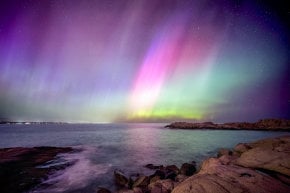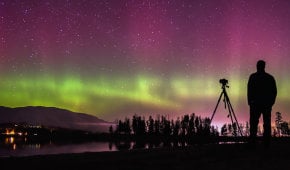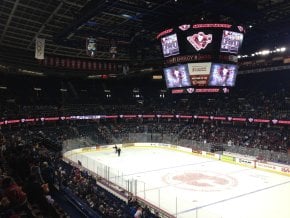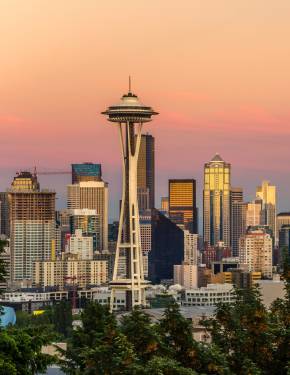Northern Lights in Calgary 2025-2026
Aurora borealis can be captured in South Alberta
Best time: September–July
Calgary, located in southern Alberta, is not as famous for its aurora displays as the northernmost parts of the province. However, you still have a solid chance to witness there, the beautiful natural phenomenon which is caused by the so-called "solar wind". Now, let's get into the details!
The best time to visit Calgary for Northern Lights
The best time to see the Northern Lights is autumn and winter months. Spring and fall equinoxes are known to bring increased geomagnetical activity; hence, your chances to see Northern Lights get bigger. Also, in Calgary, the Northern Lights are usually visible from late July to mid-May.
Northern Lights Forecast Calgary
If you want to go on an aurora-chasing adventure in Calgary, check the websites of the NOAA/NWS Space Weather Prediction Center, University of Alaska Fairbanks, or University of Alberta, which publish the most precise aurora forecasts.
Where to see Northern Lights in Calgary
Nose Hill Park
Nose Hill Park, northwest of Calgary, is the best place to chase the Northern Lights if you got caught by an aurora alert in the city. A huge park with a natural landscape covers about 4.2 sq mi (11 sq.km), being the fourth-largest urban park in the country. It means that you can get away far enough from the light pollution of the big city and find a few really dark areas. The park also has plenty of open space where you can take a good look at the sky without trees or buildings hindering the view.
Big Hill Springs Provincial Park
A brief trip (41 miles or 66 km) west of Calgary will lead you to the Big Hill Springs Provincial Park, a place where the Northern Lights can be seen with minimal light pollution from neighboring cities. In the park, you can find springs and small waterfalls. A stroll through the park also includes the ruins of a historic fish hatchery and Alberta's first commercial creamery.
Bragg Creek Provincial Park
Also within a 40-minute drive west of Calgary, near Big Hill Springs Provincial Park, is Bragg Creek Provincial Park. This certified nature reserve is a wonderful place where the lights of the city do not reach, allowing for an unobstructed view of the Northern Lights. Bragg Creek Provincial Park has 84 picnic areas, playgrounds, and a slope leading to the Elbow River, which can also be used to view the Northern Lights.
Horseshoe Canyon
If you have a chance to take a short trip north, drive to Horseshoe Canyon, which is located in 10 mi (17 km) west of Drumheller. It will take you about one and a half hours by car to get there from Calgary. The canyon, often called the Canadian Badlands offers stunning scenery during the day. And at night it boasts an open view of the northern sky. If you get lucky to catch the northern lights in such a place, it's going to leave lifetime of memories for sure.
Banff National Park
Banff National Park is one of the most spectacular places for chasing Northern Lights in Canada, and it's located just 77 mi (125 km) away from Calgary. Lake Minnewanka and Castle Junction have proven to be the right spots to see aurora borealis near Banff. Peyto Lake is located near the Icefields Parkway.
Vermilion Lakes, located in the Bow Valley, in just a short drive from Banff, is another good location. The green light that dances in the sky beautifully reflects in the lakes with Mount Rundle and Sulphur Mountain on the backdrop.
How to capture auroras boreales on your camera
One of the best tools to capture elusive greens, purples, yellows, and reds is a digital SLR camera. The camera set on long exposure "sees" the lights better than a human eye. Shooting the Northern Lights is better in manual mode. Focus the camera on the farthest point. It is also advisable to focus in daylight and mark the correct lens position rather than doing it in the dark.
At the same time, the shutter speed should be the shortest possible. Your camera's ISO should be set to 2000 or higher. If the northern lights are very bright, then the exposure can be around 800.
Practical info
External resources
- Northern Lights (Travel Alberta)
- Nose Hill Park | Calgary (Official website)
- Big Hill Springs Provincial Park | Alberta Parks (Official website)
- Bragg Creek Provincial Park | Travel Alberta (Official website)
- Horseshoe Canyon | Travel Alberta (Official website)
- Banff National Park | Parks Canada (Official website)
























































